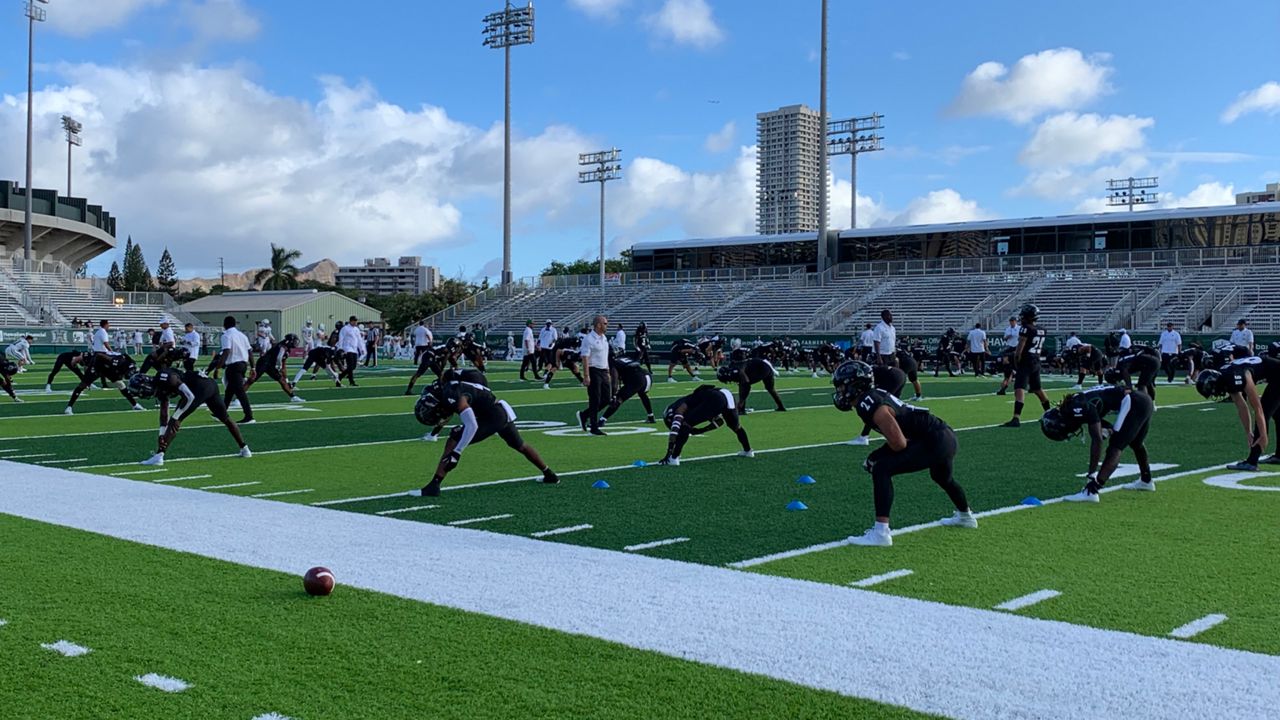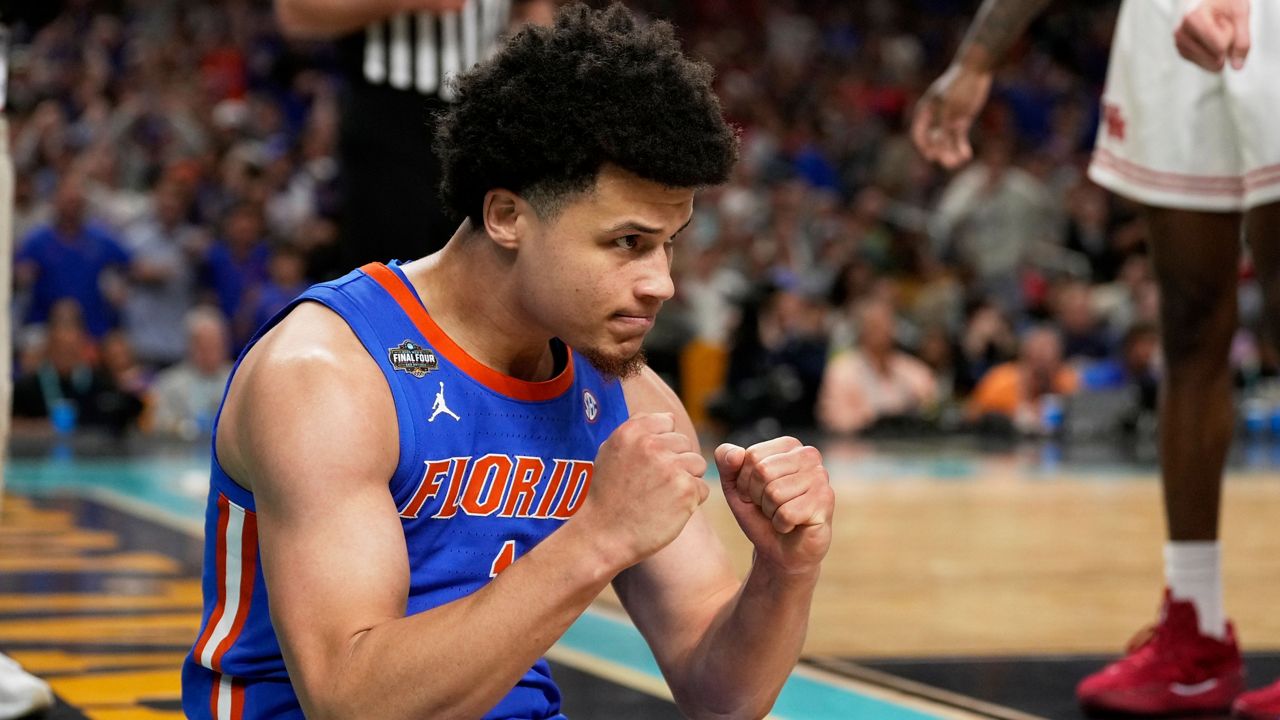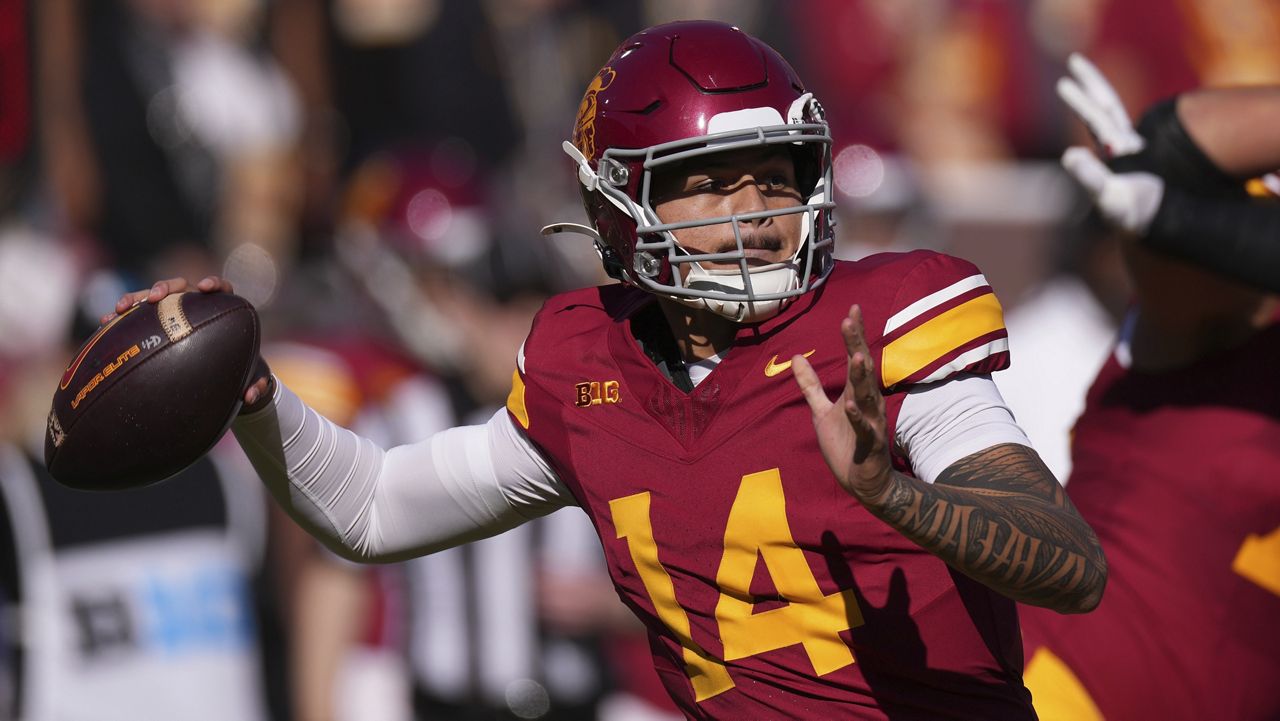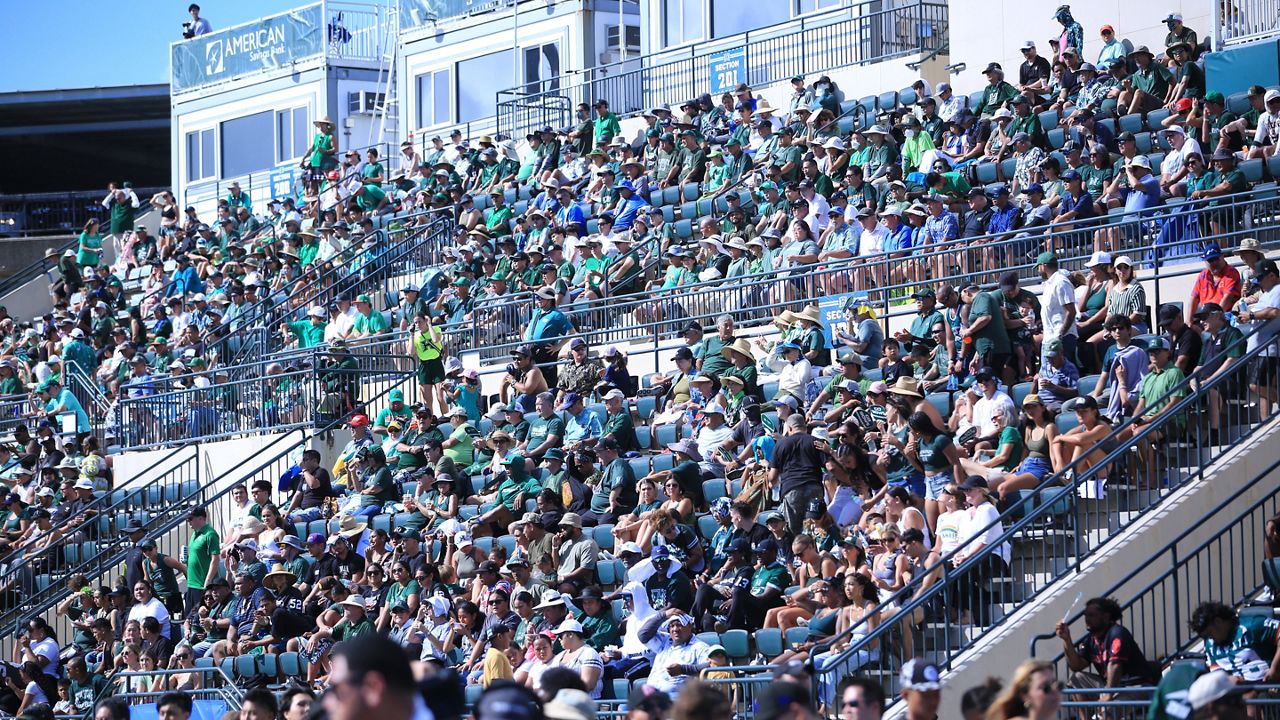HONOLULU — The University of Hawaii at Manoa athletic department nearly broke even during Fiscal Year 2022, its most recent figures showed, but its financial landscape remains challenging for future years.
UH projected in early June that its deficit for the fiscal year ending June 30 would come in at about $400,000, or $42 million in revenue to $42.4 million in expenses.
However, that was with about $9.7 million in federal aid meant to reimburse net revenue losses due to the COVID-19 pandemic – nearly a quarter of UH Manoa’s athletics budget. That outside support will not repeat in FY2023.
UH, like the majority of NCAA Football Bowl Subdivision athletic departments, has typically operated in the red in most years, spending millions on student-athlete scholarships and cost-of-attendance benefits, coaches' salaries, maintenance of facilities, and more. It lost $3.8 million in FY2020 and $1.4 million in FY2021, it showed. UH last ran in the black in 2011.
“Bottom line, we’re trending in the right direction,” UH Athletic Director David Matlin told Spectrum News in a recent interview. “I think we’re poised to continue that trend.”
In FY2023, UH does not anticipate any federal aid; it will be fully back to its own devices, but there are currently no restrictions in place on crowd size, unvaccinated fans or food and drink sales.
Matlin hopes for a full academic calendar of crowds and concessions – something that didn’t happen at all in 2020-21 and only resumed in full this March, near the end of the 2021-22 calendar. That will, in theory, return UH to something approximating its pre-pandemic revenue projections, with the notable exception that the Rainbow Warrior football team now plays in the 9,000-seat Clarence T.C. Ching Athletics Complex and not 50,000-seat Aloha Stadium.
“We made some adjustments. I think we have a chance to be closer to getting there (breaking even), but the goalposts keep moving,” Matlin said. “So I think this year (FY2023) our financial situation in a non-COVID year will be improved. I still think the challenge we have is a 10,000-seat stadium from a revenue-potential perspective. But I do think we made some adjustments where we mitigate some of that lost revenue.”
He said those included not filling the associate athletic director position that opened upon Carl Clapp’s retirement; the temporary merger of UH beach volleyball and women’s volleyball coaching positions; and a harder look at scheduling to minimize trans-Pacific flights in several sports. UH has since hired Evan Silberstein as its full-time beach volleyball coach and Matlin said he hopes to fill Clapp’s position “soon.”
The previous year, FY2021, UH athletics cut about $9.1 million in expenses, UH said, and it got $6 million in CARES Act aid to negate about $15 million in lost revenues due to pandemic-related difficulties like no ticket sales.
UH got $9.7 million in FY2022 aid through the Higher Education Emergency Relief Fund, or HEERF, distributed by the U.S. Department of Education to replace lost income. Of that, $3.2 million was to defray most of the $3.6 million of annual state government funding that was pulled by the Legislature at the start of the pandemic.
The final results of FY2022 will come in a December audit, Matlin said.
A December 2021 audit of FY2021 conducted by Accuity LLP for the UH Board of Regents showed that UHM Athletics had a multi-year accumulated net deficit of about $7.5 million through the end of that fiscal year, and that Lower Campus continued to lean on the Manoa Upper Campus for financial support.
Accuity wrote: “The financial condition of the Athletics Department continues to be fragile due to the ongoing struggle to generate operating and fundraising revenues, while continuing to manage operating expenses. These historical conditions combined with the impact of the ongoing COVID-19 pandemic will likely necessitate future recurring institutional support in order to sustain the Athletics Department.”
This year, the state Legislature approved $7.2 million of athletics money for UH Manoa (and $800,000 for UH Hilo) for FY2023.
UH finished second in the Big West Commissioner’s Cup standings in 2021-22, its highest placement in 10 years of BWC conference membership.
“For our student-athletes, coaches and support staff to have a very successful athletic year this year, says a lot about how COVID was managed,” Matlin said.” Everyone pivoted toward the challenges and persevered. But I think everyone should take a breath right now and get ready for the upcoming new season and the changing landscape of collegiate athletics.”
UH’s revenue sports in the fall, football and women’s volleyball, begin on Aug. 27 and Aug. 26, respectively.
Brian McInnis covers the state's sports scene for Spectrum News Hawaii.









